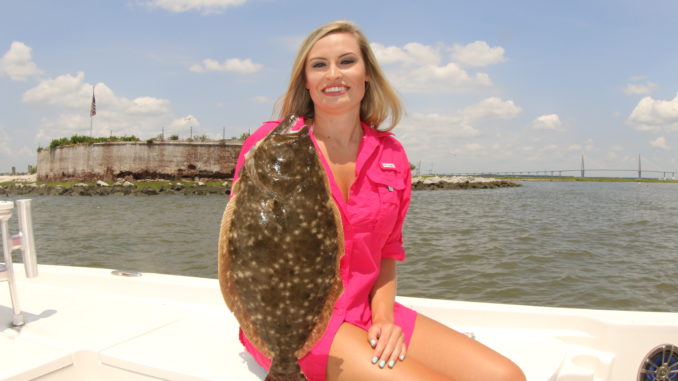
These two tips will help you land more flounder
Martin Dane stood along the bank of a small creek as the tide came in, slowly reeling in a curly-tailed grub, rod tip held high. He seemed to be concentrating really hard, lowered the rod tip, and continued reeling slowly.
“He’s on there, but he’s in that fallen timber,” said Dane, still reeling painfully slow.
Keeping his rod tip low now, he continued reeling until it seemed his lure was about to pop out of the water. Once he felt the fish was clear of the sunken tree, he set the hook, and after a short tussle, he netted a 24-inch flounder. He said he wouldn’t have landed it if he’d set the hook when he realized the fish was in the timber.
“That’s where a lot of people mess up. They either don’t know it’s in debris, or they know it is and think they have to set the hook then and fight them out. Once he realizes something is wrong, he’s going to wrap you all up in that debris, and you’re not going to get him out,” said Dane.
The best thing to do in that situation, said Dane, is to slowly reel the lure clear of the debris. More often than not, the flounder will stick with it.
“Once a flounder makes up his mind to eat something, you just about can’t pull it away from him. He’s going to swim along with it until he decides to swallow it, or until you set the hook and reel him in,” he said.
Dane knew that downed tree was there because he’s familiar with a number of small creeks in the area. He fishes on foot and has seen this water at every tide stage, so he knows where the deeper holes, the rocks, sandbars, downed timber, and oyster shell banks are. That’s another key to catching more flounder, he said.
“You can blindly fish a creek and catch a flounder or two, but if you want to consistently catch your share, you’ve got to know what things look like underwater. The best way to do that is to view it at all tides, and to drag lures through there. Even the areas that are always covered with water, you can get a feel for what it looks like there by feeling everything the lure is bumping into. You’ll get a feel for what is there, and you’ll know where to cast. The flounder want to be near debris, near deeper holes, and near shell banks,” he said.




Be the first to comment